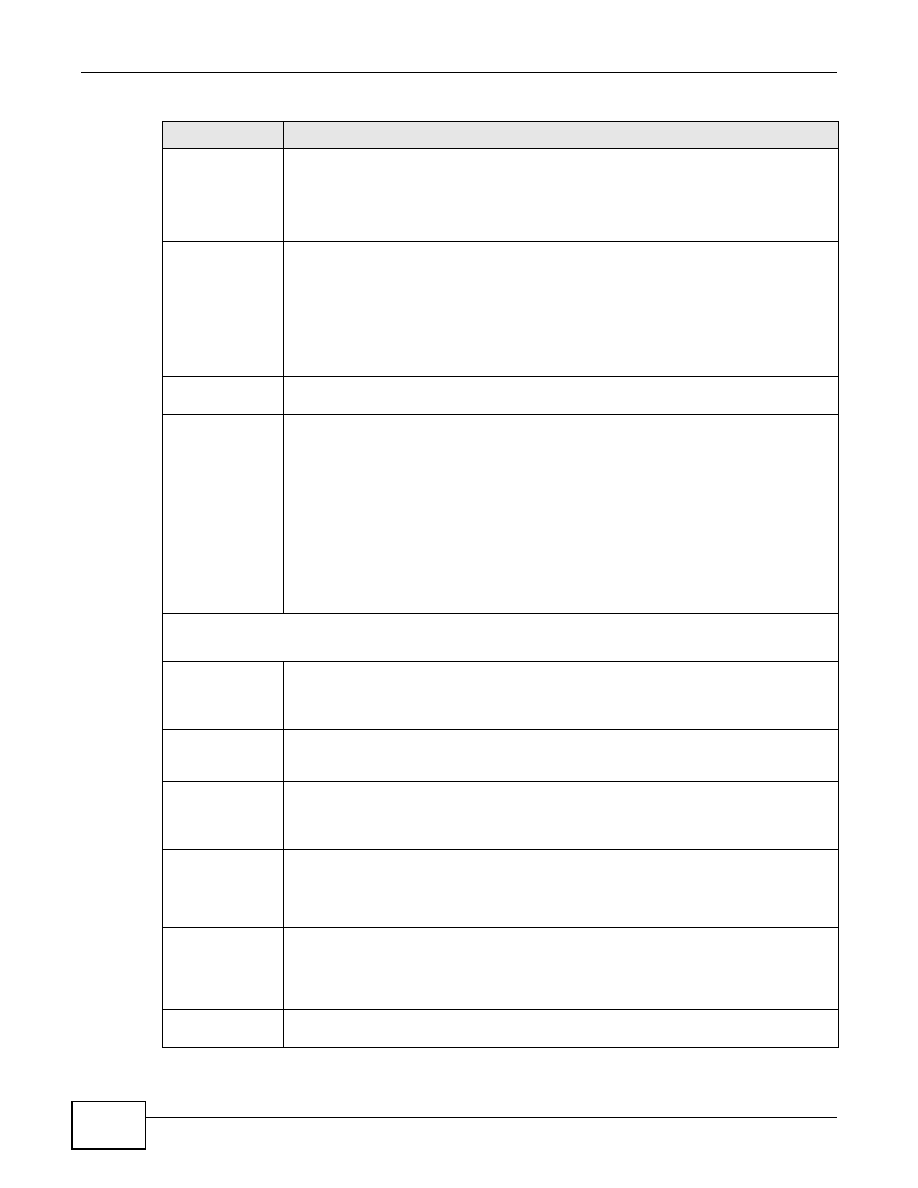
Chapter 5 Wireless Settings Screen
NWA1100-N User’s Guide
52
Wireless Mode
Select
802.11b/g
to allow both IEEE802.11b and IEEE802.11g compliant WLAN devices
to associate with the NWA. The transmission rate of your NWA might be reduced.
Select
802.11b/g/n
to allow IEEE802.11b, IEEE802.11g and IEEE802.11n compliant
WLAN devices to associate with the Device. The transmission rate of the NWA might be
reduced.
SSID Profile
The SSID (Service Set IDentifier) identifies the Service Set with which a wireless station is
associated. Wireless stations associating to the access point (AP) must have the same
SSID. Select an
SSID Profile
from the drop-down list box.
Note: If you are configuring the NWA from a computer connected to the wireless LAN and
you change the NWA’s SSID or security settings, you will lose your wireless
connection when you press
Apply
to confirm. You must then change the wireless
settings of your computer to match the NWA’s new settings.
Channel
Select the operating frequency/channel depending on your particular region from the
drop-down list box.
Channel Width
This field displays only when you select
802.11 b/g/n
in the
802.11 Wireless Mode
field.
A standard 20MHz channel offers transfer speeds of up to 150Mbps whereas a 40MHz
channel uses two standard channels and offers speeds of up to 300Mbps. However, not all
devices support 40MHz channels.
Select the channel bandwidth you want to use for your wireless network.
It is recommended that you select
20/40
(20/40 MHz). This allows the NWA to adjust the
channel bandwidth depending on network conditions.
Select
20 MHz
if you want to lessen radio interference with other wireless devices in your
neighborhood.
Advanced Settings
Click + or - to display or hide the following fields.
Beacon Interval
When a wirelessly network device sends a beacon, it includes with it a beacon interval.
This specifies the time period before the device sends the beacon again. The interval tells
receiving devices on the network how long they can wait in lowpower mode before waking
up to handle the beacon. A high value helps save current consumption of the access point.
DTIM Interval
Delivery Traffic Indication Message (DTIM) is the time period after which broadcast and
multicast packets are transmitted to mobile clients in the Active Power Management
mode. A high DTIM value can cause clients to lose connectivity with the network.
Output Power
Set the output power of the NWA in this field. If there is a high density of APs in an area,
decrease the output power of the NWA to reduce interference with other APs. Select one
of the following
Full
(Full Power),
50%
,
25%
,
12.5%
or
Min
(Minimum). See the
product specifications for more information on your NWA’s output power.
Preamble Type
Select
Dynamic
to have the AP automatically use short preamble when wireless adapters
support it, otherwise the AP uses long preamble.
Select
Long
if you are unsure what preamble mode the wireless adapters support, and to
provide more reliable communications in busy wireless networks.
RTS/CTS
Threshold
(Request To Send) The threshold (number of bytes) for enabling RTS/CTS handshake.
Data with its frame size larger than this value will perform the RTS/CTS handshake.
Setting this attribute to be larger than the maximum MSDU (MAC service data unit) size
turns off the RTS/CTS handshake. Setting this attribute to its smallest value (1) turns on
the RTS/CTS handshake.
Fragmentation
The threshold (number of bytes) for the fragmentation boundary for directed messages. It
is the maximum data fragment size that can be sent.
Table 4
Wireless > Wireless Settings: Access Point (continued)
LABEL
DESCRIPTION































































































































































































































































